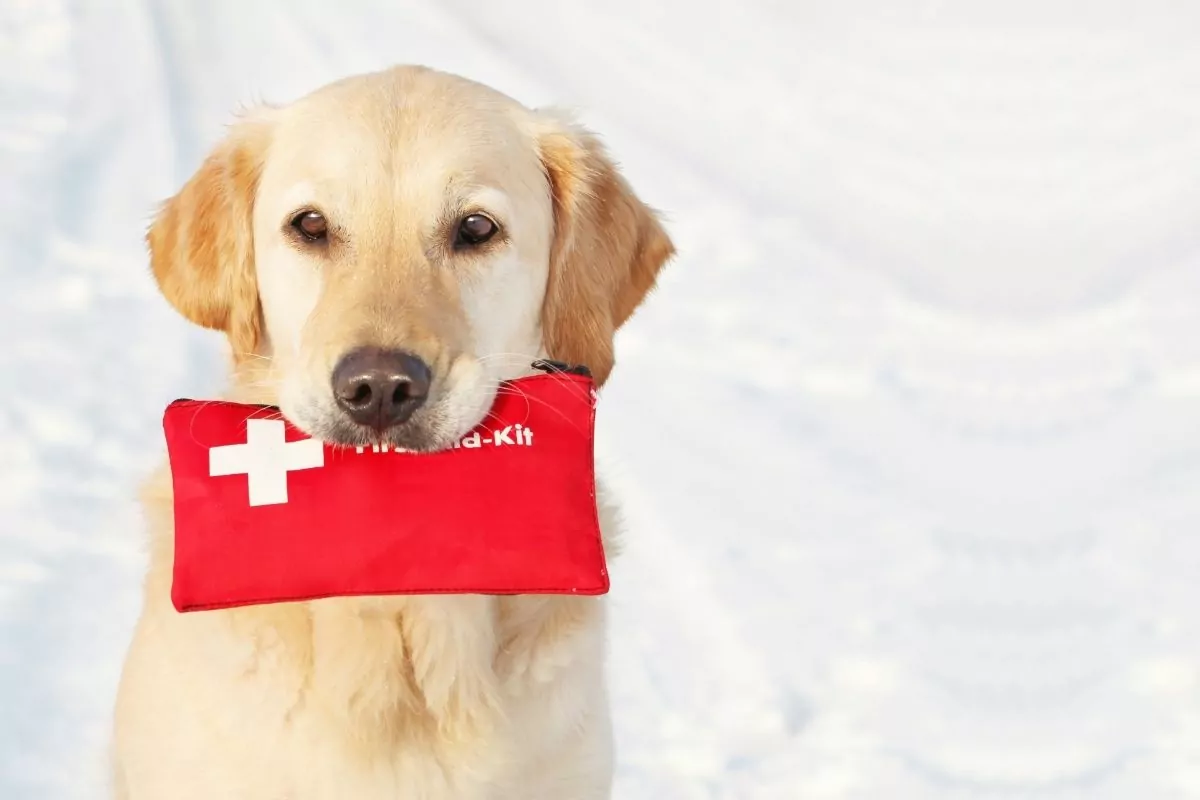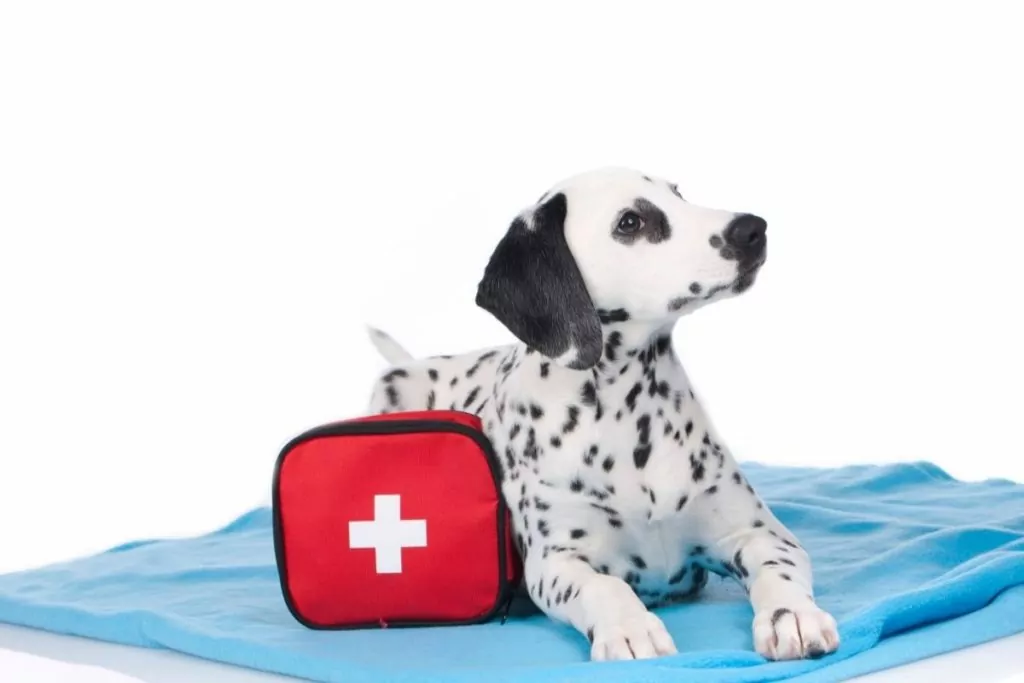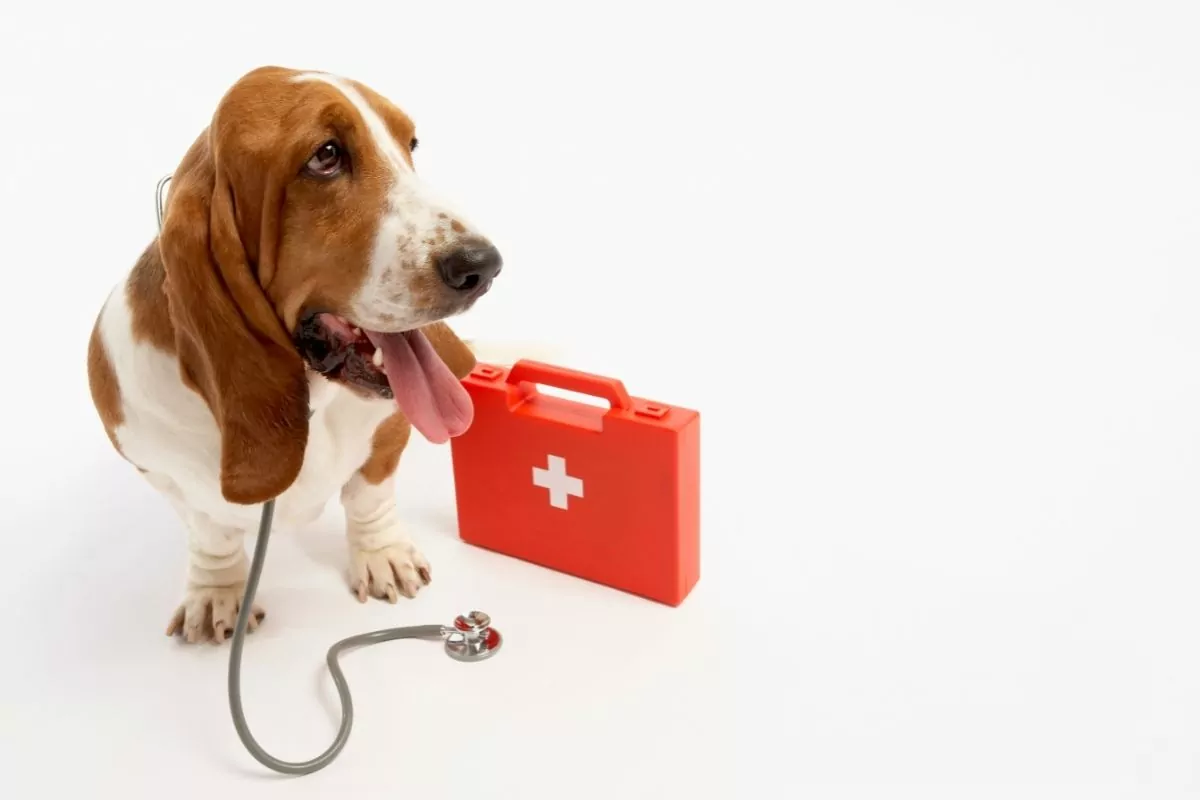What is Dog CPR?
You most likely know how CPR works in humans, but what you may not realize is that it can be performed on dogs, too. So, if you have ever wondered how to do CPR on a dog then keep reading.
Dog CPR is similar to human CPR, it stands for cardiopulmonary respiration, and it is used in situations where a dog’s heart has stopped beating, and they are not breathing. By performing regular compressions on the chest, you can massage the heart enough to move blood throughout the body to provide vital oxygen to the cells.
It is important to realize that dog CPR is not always effective, and the best place for a dog without a heartbeat is a veterinary hospital so that they can receive oxygen and medications to help restart the heart.
If performing CPR is going to delay you from reaching the veterinarian on time, it is safer to stop CPR and travel to the veterinary hospital. If you can, contact your veterinarian to let them know you are on your way so that they can get ready.

The ABCs of CPR on a Dog
When you think you need to perform CPR on your dog, it can be helpful to remember your ABCs. In terms of CPR for dogs, the ABCs stand for airway, breathing, and cardiac.
Airway
First, make sure your dog’s airway is clear. If it is safe to do so, open the mouth and check for anything obstructing the airway. If something is blocking the throat, it can cut off your dog’s air supply and may be the reason your dog isn’t breathing.
Performing CPR without checking the airway can be a fruitless exercise, as the obstruction could continue to prevent breathing despite chest compressions.
An unconscious dog can still bite, so if you do not think it is safe to put your hands near your dog’s mouth, then stop and take your animal to a veterinarian.
Breathing
A collapsed dog may still be breathing, in which case they do not need CPR but need to be seen by a veterinarian immediately. To check if your dog is breathing, take a few moments to stop and watch their chest to see if it rises and falls. If you are unsure, you can place your hand near their nose and feel for airflow.
Another tip is to gently pluck a few hairs from your pet and place them in front of the nose; if they move, it is likely your dog is breathing and does not need CPR.
Cardiac
Check for a heartbeat. The heart is located in the chest and is the easiest felt on the left side of the body, just behind or underneath the elbow. To check if the heart is beating, you can look to see the heart beating through the chest or place your hand on the chest near the elbow to try and feel. If you are still unsure, you can try to feel for pulses.
The easiest pulse is that from the femoral artery, located in the upper thigh/groin. It can be helpful to ask your veterinarian to show you where the femoral pulse is at a routine visit, so you can know about it in an emergency.
How to do CPR on a Dog
There are some key differences between CPR on humans and on dogs. This section will delve into how to perform CPR on small, medium, and large dogs. The steps to follow are:
- Check to see if your dog is breathing or has a heartbeat. If they do not, then start CPR.
- Lay your dog on its side on a flat surface. If they are in a dangerous location (e.g., on the road), move them to safety first.
- Perform chest compressions:
- Small dogs/puppies Place one hand on either side of the chest. If they are very small, you can use your thumb on one side and your other fingers on the other.
- Medium and large dogs: Kneel next to your dog, place one of your palms flat on your dog’s rib cage, near the elbow, and put your other palm on top. With straight elbows, press into your palms to compress the chest. If your dog has a barrel chest (e.g., it’s a bulldog), you may find it more effective to place your dog on its back and perform compressions from this position.
- Compress the chest by approximately one-third. Release, and then repeat. It is essential to allow the chest to expand completely so that the heart can fill with blood before being compressed again. Continue at a rate of about two compressions per second or 120 compressions per minute.
- Give rescue breaths. If possible, you can also provide breaths every 30 compressions by closing the mouth and breathing into the nose twice. If there is someone with you, they can provide the breaths.
- Continue CPR for 30 compressions, then two rescue breaths until your dog starts breathing on its own.
- Check to see if your dog is breathing or has a heartbeat every few minutes, and tag out for someone to take over to prevent fatigue.
- Get help. Continue CPR until you reach a veterinarian.
Signs and Symptoms That Your Dog Needs Emergency Care
Not breathing and not having a heartbeat are two critical signs your dog needs emergency care, but what are some other cues to take your pooch to the vet immediately?
Other signs that your dog needs emergency care include:
- Collapsed
- Gums that are pale or blue
- Breathing very fast (tachypnea)
- Heart beating very fast (tachycardia)
- Trouble standing
- Unconscious or not responding to stimuli
- Seizures (especially if they have never had one before, or they last more than a few minutes)
- Excessive bleeding
- Uncharacteristic behavior, such as aggression
- Intractable vomiting
- Electrocution

Steps to Take Before Performing Dog CPR
Before performing CPR, you must take some steps to make it as successful and safe as possible. Here are the steps:
- Contact your veterinarian to let them know you are coming. If you don’t have time to do that, just start traveling there. If there are other people around, ask them to call your veterinarian.
- Get someone to drive you to the veterinary clinic so that you can perform CPR as you travel. If there is no veterinary care available in your location, skip this step. If no one can drive you, it is still better for you to drive to the veterinary clinic than to perform CPR at home and delay medical treatment for your pet.
- Make sure your dog is in a safe position, out of the way of traffic, and not near any open water or areas where they could fall or be electrocuted. Then, move them if it is safe to do so.
- Make sure that you can safely perform CPR without being harmed in the process. For example, do not perform CPR on the road or near broken power cords or open water.
- Confirm that your dog has no heartbeat and is not breathing, take a few seconds to confirm this as it is crucial. Do not perform CPR on a dog that resists it. This means they do not need CPR.
Once you have completed these steps, it is time to perform CPR.
Precautions to Take When Performing CPR for Dogs
There are some essential precautions to take when performing CPR for dogs. Firstly, consider hygiene when performing CPR. If you are performing CPR on a dog you do not know, wear gloves and ideally a mask to deliver rescue breaths.
Secondly, CPR is not always successful. Even with trained professionals, CPR has a low success rate. The best place for your dog to be is in a veterinary clinic so that they can receive emergency medicine, oxygen, and CPR by veterinary professionals. You should not delay taking your dog to a vet.
Thirdly, make sure to perform CPR with proper technique. It is easy to become exhausted when performing CPR if performed improperly. Keep your elbows straight and bend from your hips to engage your back and shoulder muscles and leverage your body weight.
Using all the available muscles can improve your ability to perform chest compressions correctly and improve endurance.
Classes and Training on Dog CPR
If you want to be better educated on CPR, there is a range of resources to help educate yourself, both online and in person.
There are plenty of great videos online which explain how to perform CPR. An example includes a video in which Elaine Acker, former CEO of Pets America, shows you how to perform CPR on dogs in good detail.
Many companies offer hands-on pet first aid courses, including dog CPR classes. Pet Tech offers an 8-hour program in locations across the USA; check the link to see if they are in your area. Also, The Red Cross offers CPR courses with an award-winning, free app called “Pet First Aid,” which you can save on your phone in case you ever need it.
Talk to your veterinarian. When you are next in the clinic with your dog, you can ask your veterinarian to show you where the pulse points are on your dog and what to do in an emergency. In addition, your veterinarian can give you tailored advice specific to your dog’s size, breed, and weight.
Is There a Difference Between Cat and Dog CPR?
Cat CPR is very similar to Dog CPR, but there are some key differences.
Cats are much smaller than most dogs and have a more delicate structure. Therefore, it is important to perform CPR gently like you would with a small dog or puppy.
With your cat on their side, place one hand on either side of the chest. If they are very small, you can use your thumb on one side and fingers on the other. Compress the chest to one-third of its width, then release. Repeat as described above.
It is very easy to push too hard on cats and over-compress the chest. Take extra care not to compress the chest more than half the width of the chest.
Ask your veterinarian for advice on performing CPR on your cat when you bring them in at the next routine appointment. In addition, pulse points and the location of the heart can be helpful anatomic landmarks in an emergency.
Additional Dog Safety Tips
CPR can be dangerous for your dog. When chest compressions are done correctly, they can cause additional injuries to your dog. With CPR, injuries such as broken ribs, pneumothorax (collapsed lungs), and bruising can occur. In addition, small dogs and puppies require less strength in the compressions than large dogs.
In the context of a life-saving procedure, some damage is worth the risk, but for this reason, CPR should never be performed on a healthy dog. If you think you have broken a rib, don’t panic! Just continue with slightly less force.
Take care to maneuver your dog onto its side gently. Spinal and head injuries can worsen from being moved. If you are concerned that your dog could have an injury to these parts, consider leaving them in their original position and begin performing CPR there.
CPR must only be performed on dogs that have collapsed, are not breathing, and have no heartbeat. If your dog is resisting you performing CPR, they do not need it.
CPR can also be dangerous for you. For a dog that has collapsed, is not breathing, and has no heartbeat, this can sometimes be caused by things that can be dangerous to people as well.
Take special care if a dog has been electrocuted, poisoned, drowned, or had a major trauma, as these things could happen to you as you attempt to rescue your dog and perform CPR.
Consider the entire environment first and if it is not safe for you to perform CPR, stop and get help.
Lastly, if a dog is bleeding profusely, CPR is unlikely to succeed without attention applied to the bleeding. Intense pressure applied to the source of bleeding can help to slow the loss and increase the chances of a good outcome.

Have a Plan in Place!
Finding your dog collapsed and needing CPR can be scary and confusing. However, being prepared can make an emergency easier. Firstly, consider practicing finding your dog’s pulse and the location of their heart but do not practice compressions!
You could consider asking your vet next time your dog has an appointment to show you how to do this. Secondly, have a list of emergency numbers accessible in your home or saved on your phone. Finally, consider emergency clinics nearby when you travel to a new location with your dog.
Pet ambulances are available in some locations and can provide emergency care at your location. This is a great consideration and something essential to know about before an emergency.
Life-saving treatment performed at veterinary hospitals can be expensive. When considering emergencies for your dog, also consider the financial aspect. Consider pet insurance or a separate savings fund that can be used in an emergency for your pet.
Consider creating a pet first aid kit to have for an emergency. You can save the emergency numbers inside.
You could save this article to your phone for a quick reference point in case of an emergency where your dog needs CPR.
Dog CPR can be a scary concept, but being prepared can give you confidence in an emergency and help your dog have the best chance of survival.
